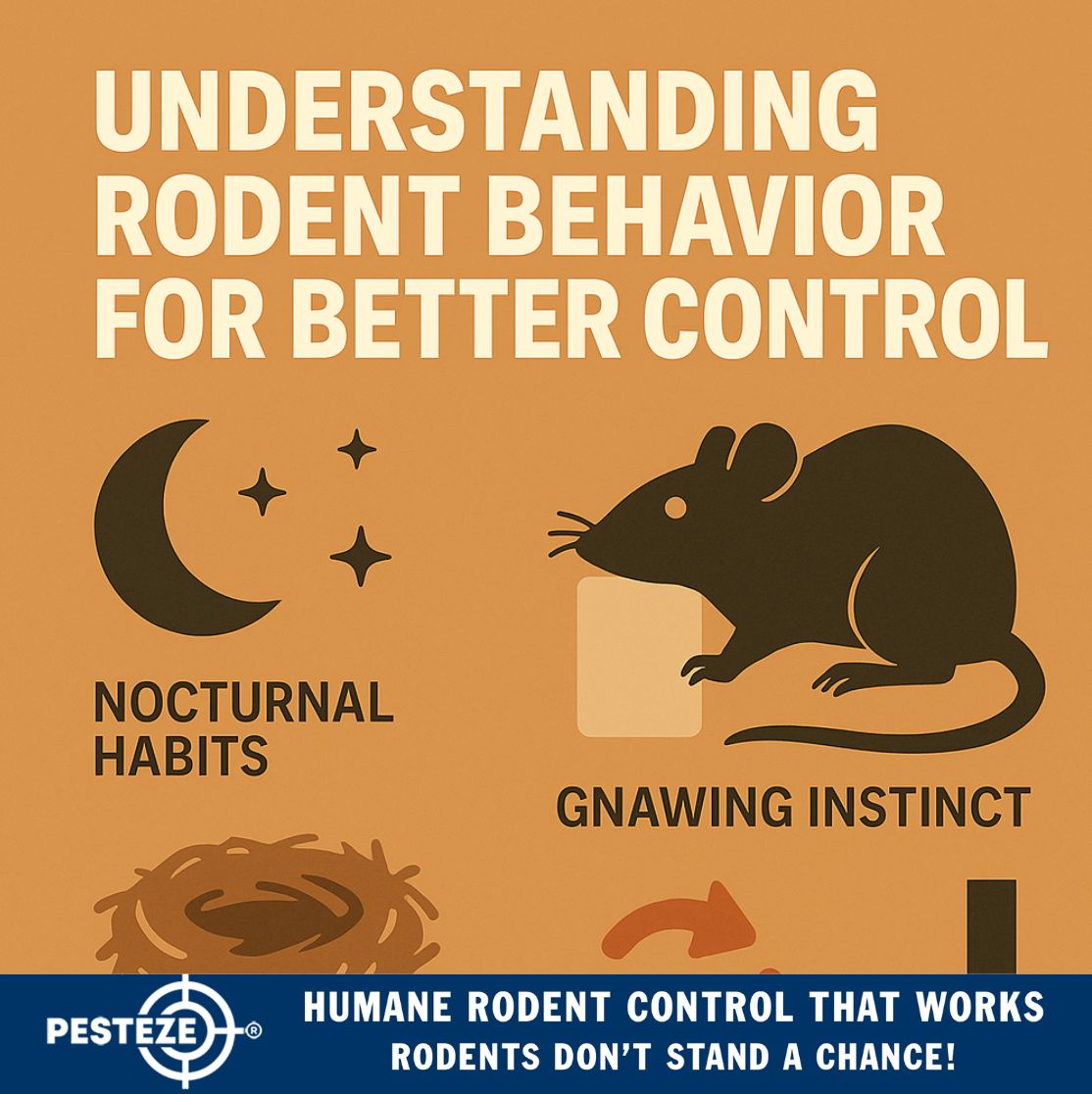UNDERSTANDING RODENT BEHAVIOR FOR BETTER CONTROL

UNDERSTANDING RODENT BEHAVIOR FOR BETTER CONTROL
SUMMARY
Rodent behavior plays a critical role in effective pest control. By learning why rodents act the way they do, you can use smarter strategies to keep them out.
FEATURES
-
Nocturnal Habits: Most activity occurs at night.
-
Gnawing Instinct: Rodents chew to maintain teeth.
-
Territorial Behavior: Rodents mark spaces with scent trails.
-
Nest Building: Common in cluttered, warm areas.
-
Food Hoarding: Rodents store food for later.
-
Predictable Pathways: They travel along walls and edges.
DESCRIPTION
Effective rodent control starts with understanding how and why rodents behave the way they do. These small pests are highly adaptive, making them difficult to control without proper knowledge. For example, rodents are nocturnal, meaning they are most active at night. This is why infestations often go unnoticed until droppings, gnaw marks, or noise in walls make their presence clear.
One of the most important behaviors to recognize is gnawing. Rodents’ teeth grow continuously, so they must chew to keep them trimmed. Wires, wood, and plastic often become targets, which is why infestations can lead to both property damage and safety hazards. Territorial behavior is another factor. Rodents use scent trails to navigate and communicate, meaning once they claim a space, it becomes part of their daily routine.
Nesting is also key to their survival. Rodents seek cluttered, warm, and hidden areas where they can build nests using shredded paper, insulation, or fabric. This makes garages, attics, and basements especially vulnerable. Along with nesting, food hoarding is another behavior that complicates control. Rodents stash food in hidden spots, giving them a reliable supply even if food sources are cleaned up.
Perhaps the most useful behavior to know is their reliance on predictable pathways. Rodents prefer traveling along walls and edges where they feel safe from predators. This behavior makes traps and deterrents placed along these routes more effective.
By learning these patterns—night activity, gnawing, scent marking, nesting, hoarding, and wall-hugging—you can outsmart rodents. Combining this knowledge with proper prevention methods, such as sealing entry points, using traps strategically, and keeping spaces clean, leads to long-term success in rodent control.
- Saharsh Bansal


Comments 0